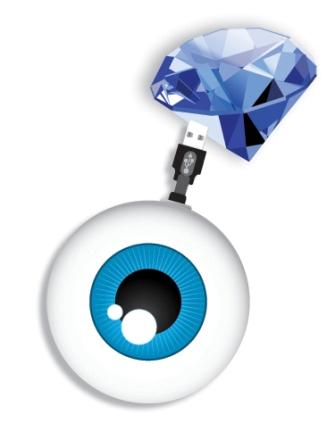Automatic For The People
November 01, 09
When people think of the diamond industry, they usually think of a manual-intensive business; of people hunched over wheels polishing diamonds by hand. There’s no doubt this picture is still a feature of low tech countries where low labor costs outweigh the implementation of automation. It is also true of large diamonds that merit individual care and attention. For the vast majority of diamonds produced these days, however, automation is increasingly the name of the game. Alex Shapiro looks at some of the advances being made in the technological arena.
While
This is done by working closely with various entities, such as academic institutes and private industry to identify viable technologies and techniques. The I.D.T. also regulates the guidelines for research and introduction of new diamond technologies, and initiates joint ventures.
"The industry is moving towards greater to full automation," says Eli Avidar, managing director of IDI. "At present, the costs and state of the business is pushing are pushing people to wait for any revolutionary steps."
One of the achievements he counts is the way technology upgraded the quality of diamonds produced as a result. "Thirty years ago, the excellent grade diamond was rare. Today, that same qualification is almost a standard. Full automation is the next step," he says.
| |
Using the now common robots or automatic machines from some of the leading makers is another option, assuming the quality of the rough diamond justifies it. Purchasing a machine that can be integrated into the polishing process costs thousands of dollars. However, they do have an advantage, the ability to reach consistent results.
One of the most frustrating aspects of polishing is the inability to know the exact nature of a rough diamond. "It is sometimes very difficult to know what a rough diamond will be like," explains Daniel Benjano, the CEO of polishing technology manufacturer OGI Systems Ltd. "For example, diamonds from
“We just started marketing a table-top machine, the OGIRex, which can analyze a rough diamond, in 17 minutes, without penetrating it and create a three-dimensional map that includes every flaw possible that is in the stone," he says.
To date, the most common way to explore the nature of a diamond is to carefully polish a part of the diamond to create a "window" to see into the diamond. However, this window does not show all the characteristics of the diamond. As the stone is polished, the rough diamond reveals its true nature and the polishing plan often has to be amended, at times substantially because of unknown flaws in the diamond that are only revealed during the exploration.
Automatic polishing involves the integration of the entire process from creating a polishing plan to the final polish, using the software and hardware from the different manufacturers.
"What is revolutionary is that these machines can reach a level of accuracy that is higher than a human being," explains David Bajkowski, manufacturing manager for Israeli diamond company YDI. As a third generation polisher with 17 years experience, Bajkowski certainly knows what he is talking about. "Once the machines only made part of the diamond production, but today, these machines are in about 80 percent of the polishing process.”
One of the advantages of using machinery over humans is that the machines produce consistent results. However, humans cannot step out of the picture altogether. “You do need to supervise the robots because wear on the machines can cause a malfunction," he says.
During the entire process, the stone is repeatedly scanned and compared to the polishing. According to Bajkowski, who began in the polishing business at the age of 18 before moving onto managing the polishing process eight years later, there aren’t any big differences between the various manufacturers. “All the
planning devices have two parts, one machine deals with the rough and the other with the polished. All the machines allow you to maximize the value of the stone you are polishing. The machines that are part of the work on the polished part of the process constantly allow you to check and see what the polishing level for the stone is."
To date, the various machines allow owners to utilize up to six different automated arms, holding six different stones that can all be polished at the same time.
Automated polishing has moved the polishing process into yielding constant high results, and the ability to plan and get an excellent-excellent-excellent grade for a polished stone.
"After planning, the parameters pass from their system, to our system, which sets up the polishing," says Amram Leshed, from automatic polishing machine maker Dialit, which has been manufacturing machines for the diamond industry since 1969. "The benefit of automation is repeatedly yield. What you plan, is what you get. [There is] no human factor.”
Sarin Technologies Ltd is another entity offering tools for the diamond industry. The company has been providing its services for 20 years and its machines include diamond cut grading tools (for round and fancy shapes), rough diamond optimization systems, gemology tools, diamond color grading and laser marking machines.
Akiva Caspi, vice president of marketing and development at Sarin describes one of the company’s products that advises users how to re-cut a diamond to maximize the yield potential. The machine is needed because older stones that were polished before automation became widespread can be flawed or have problems with the make, which affects the overall appearance and value. Often, a re-cut will improve their qualities, which consequently improves their value.
Sarin’s Advisor software was devised for just this purpose. "Advisor is used by many people through the pipeline to maximize the value they can get from a rough stone,” says Caspi. “For example users can take a stone that weighs 1.25 carats with a small flaw, and Advisor can suggest to a retailer or a broker how a small second polishing can increase its value by reducing its size to eliminate the flaw."
